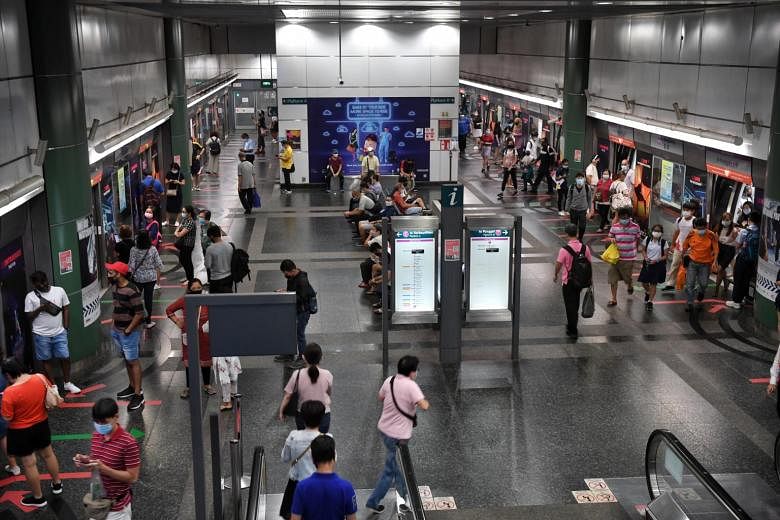SINGAPORE - On his way home from work one day and walking towards Serangoon MRT station, Mr Ng Choon Hwee, who is fully blind, bumped into one of the pillars of the sheltered walkway and cut his head.
"Even though I was using my cane and I know the route well, I still bumped into the pillar as the placement (of all the pillars) is not standard," said Mr Ng, 65.
It can be difficult enough navigating as a person with visual impairment, but when infrastructure is unpredictable, it makes it even harder, he added.
Mr Ng, who keeps himself updated on technology and uses both Windows and Mac computers and an iPhone for leisure and work, also called for more skills and upgrading courses that are disability-friendly.
"For example, the $500 SkillsFuture credits are not very useful to us as there are very few courses tailored to persons with visual impairment," he said.
Both issues of improving accessibility and digital inclusion for persons with disabilities are tackled in recommendations unveiled by two workgroups on Wednesday (April 14).
One of the recommendations by the employment workgroup seeks to better equip persons with disabilities with digital literacy skills that are relevant and competency-based.
To that end, SG Enable will be working with social service agencies, SkillsFuture Singapore and the Infocomm Media Development Authority to identify competencies that persons with disabilities require, and curate courses for the disability community.
The independent living workgroup called for systematic improvements to barrier-free access and wayfinding, the development of a barrier-free navigation feature in map applications, and enhancements to the commuter experience in the public transport system for persons with disabilities.
Mr Ng, who works in a church where he helps persons with visual impairment within the church and in the community, said that public areas should have their accessibility improved for people like him.
For example, tactiles on the ground can be placed more thoughtfully. At some places, the tactile paths stop abruptly or do not lead a person to the exit at an MRT station, said Mr Ng.
"Some stations have tactiles along the middle of the ramps - which are not particularly useful as tactiles are used more as a warning sign of danger - and at the same time, may make it difficult for persons in wheelchairs or those using prams," said Mr Ng.
He suggested implementing audio guidance at MRT stations that could tell persons with visual impairments what is ahead, but noted that it would have to be thought through carefully as there are already many announcements in stations.
Mr Ng also pointed out that the audio beeping noises at traffic lights, which help blind people know when to cross the road, get turned off at night to minimise disturbance to the community, which then makes it difficult for blind people to navigate.
Ms Chia Yong Yong, co-chair of the independent living workgroup, said: "(This example illustrates) the importance of both infrastructure and technology as well as community acceptance and understanding."
The aim is to enable independent living for people with disabilities, so they can move about on their own and get things done as much as possible with minimal reliance on others, she said.
Ms Chia, who was the first wheelchair-using MP when she was appointed as a Nominated MP in 2014, added: "What we want is also for people to go out and relate to others as their equal... (and) the ability for people to see people with disabilities as another person in the community."


